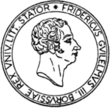Blaise Pascal's calculating machine
This time, we would like to show you the oldest preserved calculating machine from the year 1642. It was invented by mathematician and philosopher Blaise Pascal in Rouen at the age of 19. His father, a tax official in Normandy, was able to use that invention for his calculations right away. He was so enthusiastic that he presented it to his superior, the Grand Chancellor of France Pierre Séguier, who awarded Pascal a royal privilege for the invention. Pascal let the clock makers in Rouen manufacture several machines. One of the original ones can be seen in the Arithmeum exhibition as a permanent loan from the IBM collection. We would like to thank IBM for this beautiful loan. The 3D animated video made by Mario Wolfram shows the machine from the Mathematisch-Physikalischer Salon in Dresden. It is the one with the highest number of digits that is preserved to this day. It is particularly well suited to illustrate the genius, but also the elegance of Pascal’s invention. The machine perfectly executes even secondary tens carries on all digits. For this unique feature, Pascal used a mechanism that stores energy. It is what makes the Pascaline stand out against the calculating machine that Wilhelm Schickard invented in 1623. It was reconstructed from drawings found in Johannes Kepler’s unpublished works in the 20th century. Schickard’s calculating machine is therefore the first one, but technically speaking, Pascal’s invention was a lot more sophisticated. You can find a french version of this video here.






